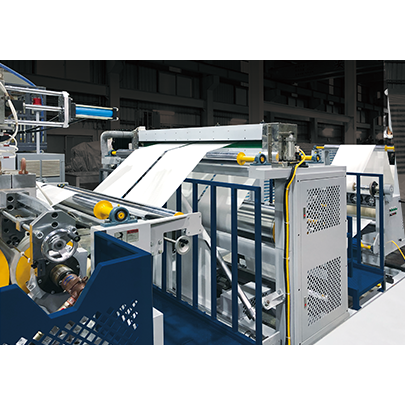6-20 个字符(仅限字母加数字)
密码不一致


Nonwoven Laminator Machine: Streamlining Production
The nonwoven industry has seen significant growth in recent years, driven by the demand for hygiene products, medical textiles, and industrial applications. At the heart of this growth is the technology that enables the production of high-quality nonwoven fabrics. One such technology is the automatic nonwoven lamination machine, which plays a crucial role in the manufacturing process. In this blog post, we will explore the importance of this machinery, its applications, and the benefits it offers to the industry.
Understanding Nonwoven Laminations
Nonwoven fabrics are materials made directly from fibers, without the need for weaving or knitting. They are bonded together using various techniques, one of which is lamination.
What is Laminated Nonwoven?
Laminated nonwoven fabric is created by bonding two or more layers of nonwoven material together using adhesives, heat, or other methods. This process enhances the fabric's strength, durability, and performance characteristics.
Why is Laminator Important?
Lamination is essential for producing nonwoven fabrics with specific properties, such as water resistance, enhanced strength, or barrier properties. It allows manufacturers to create customized materials tailored to their needs.
Automatic Nonwoven Laminator Machine: The Workhorse of Production
The automatic nonwoven lamination machine is designed to streamline the lamination process, ensuring consistency and efficiency.
Key Features
- Automation: The machine operates automatically, reducing the need for manual labor and minimizing the risk of human error.
- Speed: It can process large volumes of material in a short amount of time, increasing production output.
- Precision: Advanced control systems ensure that the lamination process is consistent and accurate.
- Versatility: Many machines can handle a variety of materials and lamination techniques, making them suitable for diverse applications.
Applications of Automatic Nonwoven Laminator Machines
The automatic nonwoven lamination machine is used in a wide range of applications, from hygiene products to industrial materials.
Hygiene Products
One of the primary uses of laminated nonwoven fabrics is in the production of hygiene products such as diapers, sanitary pads, and adult incontinence products. The lamination process helps create a liquid barrier while maintaining breathability.
Medical Textiles
In the medical field, laminated nonwovens are used in applications like surgical gowns, masks, and drapes. These materials must meet strict standards for fluid resistance and cleanliness.
Industrial Applications
Laminated nonwovens also find use in industrial applications such as geotextiles, automotive insulation, and filtration materials. The lamination process can enhance the material's durability and resistance to various environmental factors.
Agricultural Uses
In agriculture, laminated nonwoven fabrics are used in mulching, weed control, and protection from the elements. The lamination process can improve the fabric's UV resistance and strength.
Benefits of Using Automatic Nonwoven Laminator Machines
The use of automatic nonwoven lamination machines offers several benefits to manufacturers.
Increased Efficiency
Automation leads to faster production times and increased efficiency, allowing manufacturers to meet demand and reduce lead times.
Consistent Quality
The consistent application of heat, pressure, and adhesive ensures that every piece of laminated nonwoven fabric meets quality standards.
Cost Savings
By reducing the need for manual labor and minimizing material waste, automatic nonwoven lamination machines can help reduce cost.
Flexibility
These machines can often be adapted to handle different materials and lamination techniques, providing flexibility in production.
Sustainability
Many automatic nonwoven lamination machines are designed with energy efficiency in mind, reducing the environmental impact of production.
Choosing the Right Automatic Nonwoven Laminator Machine
When selecting an automatic nonwoven lamination machine, consider the following factors.
Capacity
Choose a machine that can handle the volume of production you require, both now and in the future.
Material Compatibility
Ensure the machine can handle the types of nonwoven materials you plan to use.
Ease of Operation
Look for a machine with an intuitive control system and user-friendly interface to minimize the learning curve for operators.
Maintenance
Consider the maintenance requirements of the machine and ensure they align with your maintenance capabilities and budget.
Support and Service
Choose a reputable manufacturer that offers strong support and service to ensure the longevity of your machinery.
Conclusion
Automatic nonwoven lamination machines are indispensable in the production of laminated nonwoven fabrics. They offer a range of benefits, from increased efficiency to consistent quality, making them a worthwhile investment for manufacturers in the nonwoven industry. As the demand for nonwoven products continues to grow, the role of these machines becomes increasingly important in meeting the market's needs.

